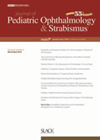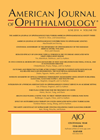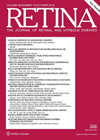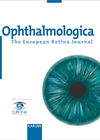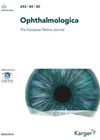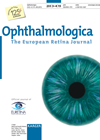You searched for "choroidal"
Glaucoma diagnosis after paediatric cataract surgery
The authors undertook a retrospective review of patients with glaucoma after congenital cataract surgery and report clinical presentation, treatment and long-term outcomes at a tertiary referral centre. The study included 58 eyes of 42 patients of which 59% were male....The management of chronic central serous chorioretinopathy
1 February 2017
| Marten E Brelen
|
EYE - Vitreo-Retinal
Central serous chorioretinopathy (CSCR) is a common retinal disease characterised by one or more serous neurosensory detachments. Patients present with acute onset blurring of vision, metamorphopsia and / or central scotomas. The condition is six times more common in men...
Moorfeilds: Cataract, medical retina and disc assessment
15 September 2025
The Cataract/medical retina/ disc assessment short course has been designed to meet the training needs of band 6’s and 7s who wish to develop their knowledge and skills in disease recognition, management and intervention of cataract, medical retina and disc...
Traumatic ‘toy’ gun injury leading to permanent vision loss
6 April 2021
| Ehinomen Inegbedion, Doa’a Kerwat, Goncalo Almeida
Pseudoxanthoma elasticum (PXE) is a progressive, inherited disorder of connective tissue that affects the skin, cardiovascular system and retina. Ocular manifestations of the disease are related to Bruch’s membrane, a thin elastic tissue layer located between the retinal pigment epithelium...
Sarcoid uveitis and its systemic associations
1 October 2021
| Tasmin Berman
|
EYE - Vitreo-Retinal
This retrospective cross-sectional study examined systemic associations of sarcoid uveitis and association with uveitis clinical phenotype and ethnicity. Three hundred and sixty-two subjects with either definite or presumed sarcoid uveitis were identified and included in the study. Any subject with...
Understanding spaceflight-associated neuro-ocular syndrome (SANS): what do we know?
Introduction Formerly known as visual impairment and intracranial pressure syndrome (VIIP), space-related neuro-ocular syndrome (SANS) is defined by a collection of ophthalmic and neurological findings in astronauts after long-term spaceflight [1]. Changes in the eyeball, such as hyperopic shift, during...RPE tears after intravitreal Lucentis
1 February 2017
| Saruban Pasu
|
EYE - Vitreo-Retinal
The current hypothesis regarding retinal pigment epithelium (RPE) tears is the contraction and fibrosis in choroidal neovascularisation (CNV) tissue after anti-VEGF therapy can induce rips in the overlying RPE. This South Korean study aimed to identify the association between RPE...
Subthreshold micropulse laser treatment in chronic central serous chorioretinopathy
1 February 2016
| Sofia Rokerya
|
EYE - Vitreo-Retinal
This retrospective study was conducted to assess the treatment of 38 patients of chronic central serous chorioretinopathy with a 577-nm subthreshold micropulse laser (SML) Supra Scan Quantel Medical. Eighteen patients of these had persistent subretinal fluid (SRF) after photodynamic therapy....
Microvasculature changes of mCNV after ranibizumab treatment using OCTA
4 February 2021
| Sofia Rokerya
|
EYE - Vitreo-Retinal
In this study the authors aim to evaluate the vascular changes of myopic choroidal neovascularisation (mCNV) after ranibizumab treatment using optical coherence tomography-angiography (OCTA). The 3×3 OCTA en face images were analysed for the absence / presence of mCNV, CNV...
OCTA in geographic atrophy
4 August 2021
| Sofia Rokerya
|
EYE - Vitreo-Retinal
|
Age-related macular degeneration, Angiography, Choriocapillaris, Choroid, Optical coherence tomography
In this article the authors aim to give an overview of the current literature concerning the application of OCT-A in geographic atrophy (GA). GA is a disease characterised by loss of outer retinal layers including photoreceptors, degeneration of the retinal...
Risk factors and prognosis of paediatric open globe injuries
1 October 2021
| Sofia Rokerya
|
EYE - Vitreo-Retinal
|
Choroidal damage, Endophthalmitis, No light perception, Pediatric open globe injuries, Vitreoretinal surgery
This retrospective, comparative, interventional case-control study was aimed to investigate possible risk factors and prognosis of initial no light perception (NLP) in paediatric open globe injuries (POGI). A total of 851 cases were reviewed, including 837 unilateral cases and 14...
Comparison of retinal pigment epithelium-choroid graft surgery and anti-VEGF therapy in patients with wet AMD
1 December 2015
| Sofia Rokerya
|
EYE - Vitreo-Retinal
This was a randomised intervention study in wet AMD patients to investigate benefits of free RPE-choroid graft transplantation surgery versus (continuation of) anti-VEGF treatment. Twenty patients who met the inclusion criteria were subdivided into three subgroups, i.e. RPE tears involving...

